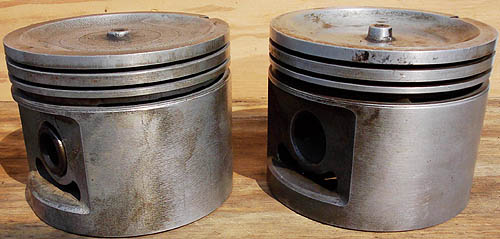
Buick 455 engines left the factory with cast aluminum pistons with dished tops.The only non-dished factory piston used was the forged units offered as part of the dealer-installed Stage program.The Stage 2 and non-stage pistons were the same as cast units.1970 compression ratios were 10-1, 1971 and later ratios were 8.5-1.Most of this drop in compression was due to the deeper dish in the pistons.The Stage 2 forged pistons were a flat top design with a trench type valve relief. Stage two pistons were rated at 11-1.The 1971-1974 pistons are similar design if not identical. I took three measurements from each of the pistons pictured. First is compression height or distance.This is the distance from the centerline of the wrist pin to the top of the piston. I measured this with a dial caliper from the top of the pin hole to the top edge of the piston. Adding 0.500 gets you to the pin centerline as the pin hole is 1.00 in diameter. Second I measured the dish volume. I did this in the same manner as one would measure combustion chamber cc in a cylinder head. I sealed a flat piece of plexiglass with a hole in it to the top of each piston then filled the dish with fluid from a graduated cylinder. The measuring cylinder that I used held 10cc and originally was used to measure medication. There are some real accurate devices available.
Disclaimer: I do not claim to be an all-knowing expert on anything, let alone piston design and manufacture. I am the owner of the pistons photographed in this article and have taken the described measurements to the best of my capability. If anyone has better or more detailed information on this subject, I would love to hear it and I am more than willing to edit this material accordingly. This is an attempt to put a collection of piston and piston related info in one place.

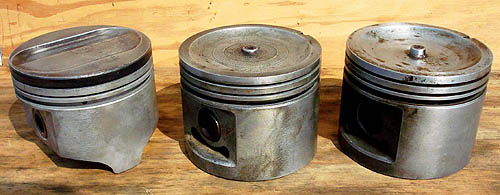
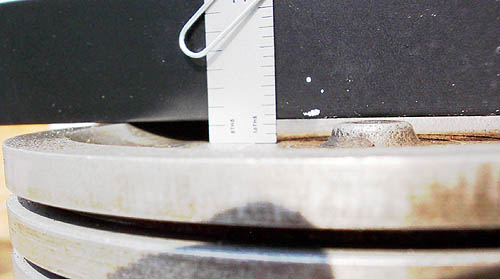
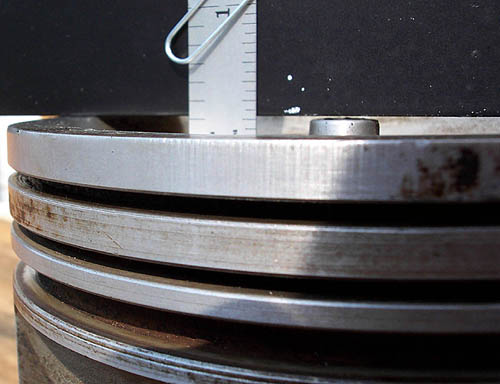
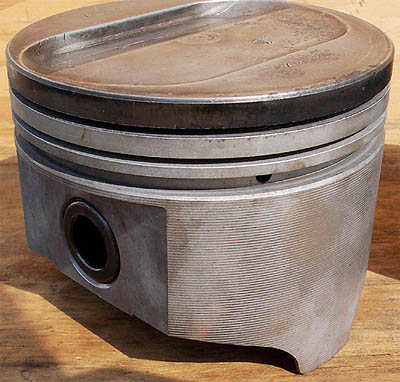
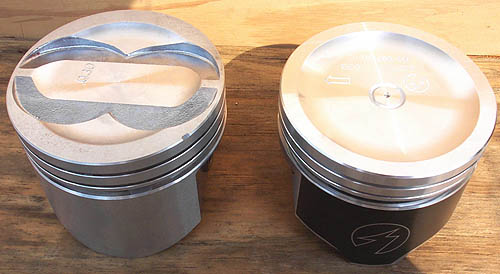
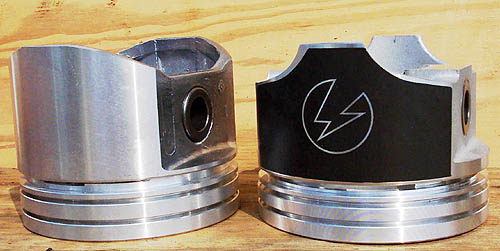
Any Questions?? Fred